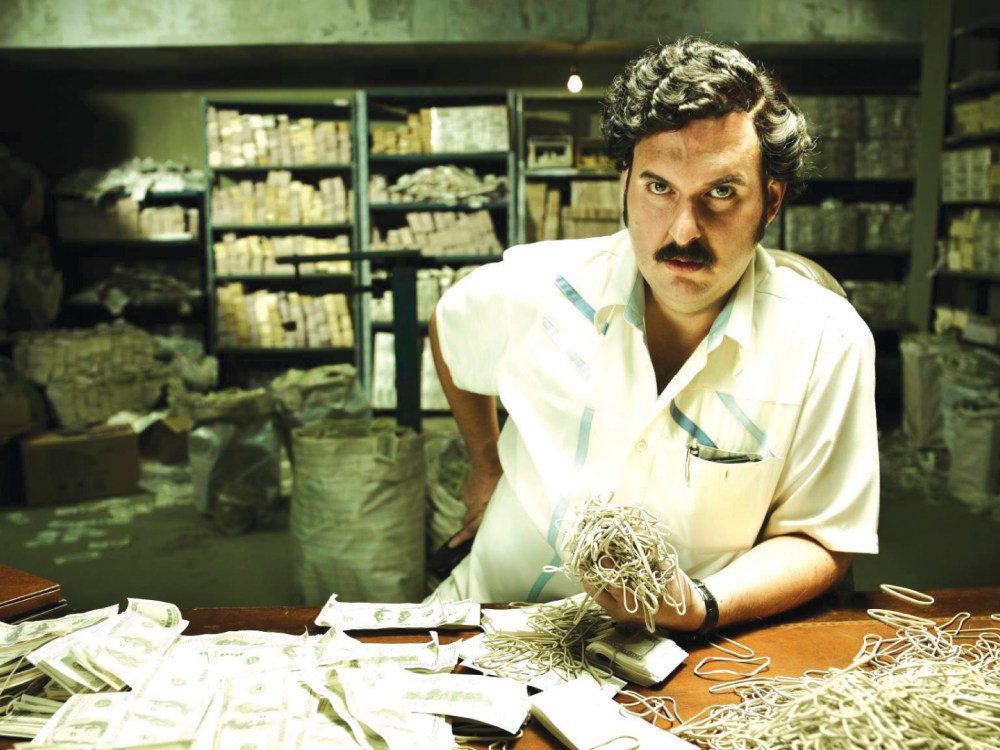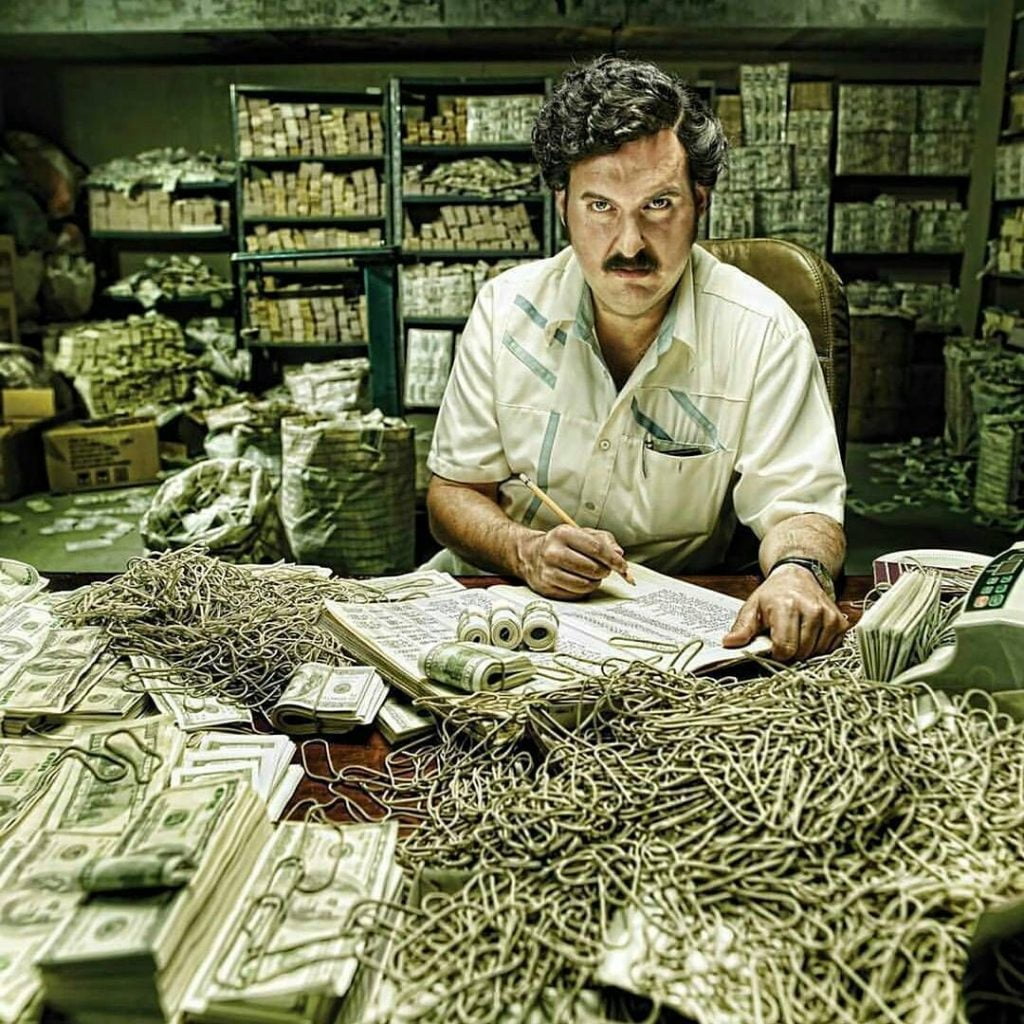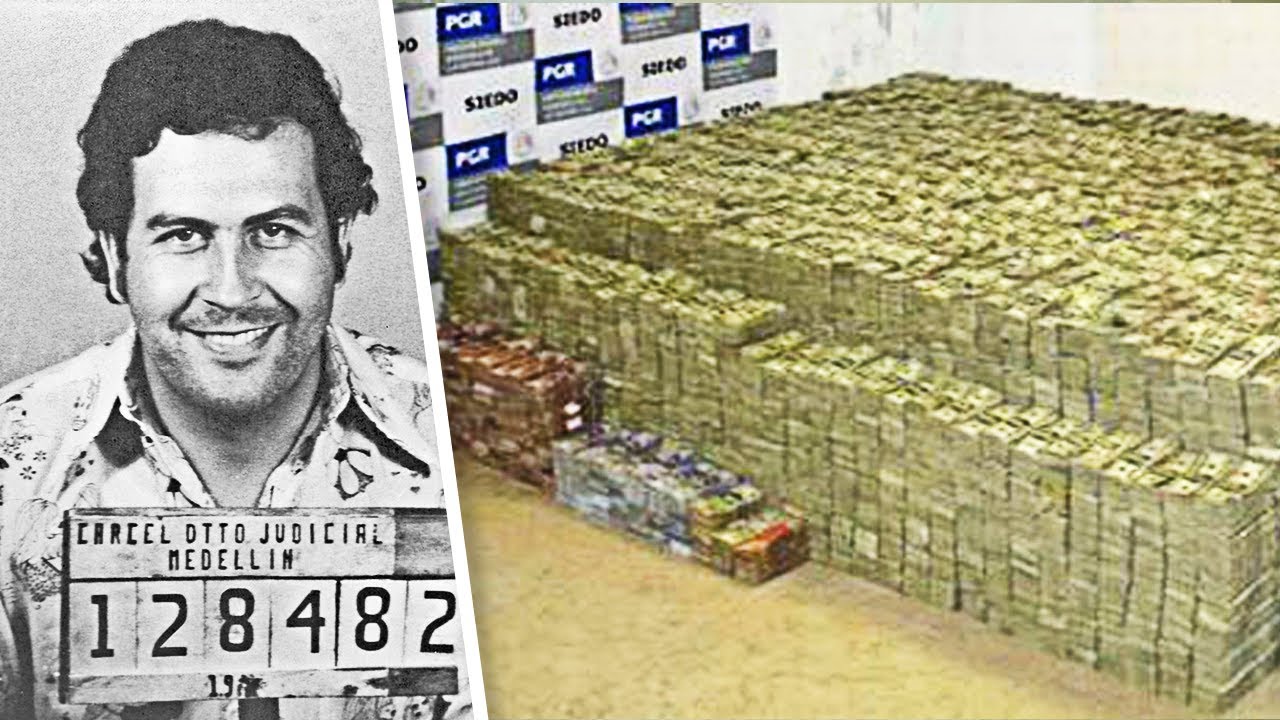Untold Story: The Shocking Truth About Pablo Escobar's Wealth
How does one reconcile unimaginable wealth with unspeakable violence? The life of Pablo Escobar, the notorious Colombian drug lord, offers a chilling case study, demonstrating that immense fortune can be both a builder of empires and a harbinger of destruction. His reign atop the Medelln Cartel saw him amass a fortune so vast it defied comprehension, cementing his place as one of history's wealthiest criminals.
Fueled by the relentless demand for cocaine in the United States and beyond, Escobar's empire expanded with terrifying efficiency. His estimated net worth, reaching a staggering $30 billion, became synonymous with the excesses of the drug trade. Yet, the narrative surrounding Escobar's wealth is far from simple. He cultivated a complex image, simultaneously projecting the persona of a ruthless kingpin and a generous benefactor, blurring the lines between villainy and philanthropy in the eyes of many Colombians. Understanding the magnitude of Pablo Escobar's wealth requires examining not only the mechanics of his drug operation but also the profound social and political consequences of his actions.
| Category | Detail |
|---|---|
| Full Name | Pablo Emilio Escobar Gaviria |
| Birth Date | December 1, 1949 |
| Birth Place | Rionegro, Colombia |
| Death Date | December 2, 1993 |
| Cause of Death | Shot and killed by Colombian National Police |
| Nationality | Colombian |
| Occupation | Drug Lord, Smuggler, Businessman |
| Years Active | 1970s - 1993 |
| Organization | Medelln Cartel |
| Estimated Net Worth (Peak) | Approximately $30 billion USD (unadjusted) |
| Known For | Leading the Medelln Cartel, cocaine trafficking, extreme violence, narco-terrorism |
| Family | Wife: Maria Victoria Henao; Children: Juan Pablo Escobar Henao, Manuela Escobar |
| Political Involvement | Briefly served as an alternate member of the Chamber of Representatives of Colombia |
| Controversies | Responsible for thousands of deaths, bombings, and widespread corruption |
| Legacy | Remains a controversial figure, symbolizing the destructive power of the drug trade, but also a figure of morbid fascination. |
| Reference | Biography.com - Pablo Escobar |
Born into relatively modest circumstances in Rionegro on December 1, 1949, Pablo Emilio Escobar Gaviria's ascent from the streets of Medelln to the apex of the global cocaine trade is a story of audacious ambition and ruthless pragmatism. Dropping out of school, young Escobar initially dabbled in petty crime, honing the skills and cultivating the contacts that would later serve him in his more ambitious endeavors. The late 1970s marked his decisive entry into the burgeoning drug trade, as he began smuggling cocaine into the United States. With shrewd business acumen and a penchant for violence, he quickly distinguished himself, laying the foundation for what would become the Medelln Cartel.
- Untold Story Larry Finks Grandson Family Values Future
- Exploring The Megnut Fanbus What It Is Why Fans Love It
The Medelln Cartel, under Escobar's iron fist, transformed the cocaine trade into a highly organized and immensely profitable enterprise. By the early 1980s, the cartel controlled an estimated 80% of the cocaine flowing into the United States, a statistic that underscores the sheer scale of Escobar's operation. To maintain this dominance, Escobar employed a multifaceted strategy. He cultivated alliances with corrupt officials, leveraging bribery as a means of ensuring the smooth passage of his product. Simultaneously, he unleashed brutal violence against rivals, silencing opposition and consolidating his control over key trafficking routes. This combination of corruption and intimidation proved remarkably effective, allowing Escobar to build a vast and seemingly impenetrable empire.
Escobar's business acumen extended beyond the core drug operation. He understood the importance of diversifying his assets, investing heavily in legitimate businesses such as real estate and agriculture. These ventures served a dual purpose: they provided a means of laundering his vast profits, converting illicit gains into seemingly legitimate income, and they further entrenched his influence within Colombian society. By becoming a major employer and landowner, Escobar gained a degree of social and political legitimacy, complicating efforts to bring him to justice. It wasn't merely about making money; it was about consolidating power and constructing a parallel system of control.
The tangible manifestations of Pablo Escobar's wealth were as extravagant as they were unsettling. Hacienda Napoles, his sprawling estate, became a symbol of his power and opulence. This wasn't merely a residence; it was a private kingdom, complete with a zoo filled with exotic animals, a bullring for lavish displays of spectacle, and even a replica of the Statue of Liberty, a perverse homage to the nation that fueled his criminal enterprise. In addition to Hacienda Napoles, Escobar acquired numerous private islands in the Caribbean, transforming them into exclusive retreats for himself and his inner circle. His passion for luxury extended to automobiles; he amassed a fleet of high-end vehicles, including Ferraris and Lamborghinis, reflecting his taste for the finer things in life. Securing his wealth required an equally elaborate infrastructure. Escobar maintained numerous bank accounts in various countries, strategically dispersing his assets to evade detection and seizure.
- Is House Md Really Coming Back Hugh Laurie Speaks Out
- Untold Facts Miranda Harts Partner Relationship More
However, the impact of Escobar's wealth extended far beyond his personal indulgences. His actions had a profound and often devastating effect on Colombia. The drug trade fueled an unprecedented wave of violence, claiming the lives of thousands of innocent civilians, law enforcement officials, and rival cartel members. The pervasive corruption that enabled Escobar's operation eroded the foundations of Colombian institutions, undermining the rule of law and creating a climate of impunity. While Escobar sought to cultivate a Robin Hood image by funding community projects, this philanthropy was ultimately overshadowed by the immense suffering he inflicted on the nation.
Public perception of Pablo Escobar was deeply divided. For some, particularly those in the impoverished communities where he invested in infrastructure and social programs, he was seen as a savior, a benefactor who provided opportunities that the government had failed to deliver. This perception was carefully cultivated through targeted acts of charity and strategic public relations. However, for many others, Escobar was viewed as a monstrous figure, a symbol of the violence and corruption that plagued Colombia. His reign was marked by bombings, assassinations, and widespread terror, leaving a legacy of fear and resentment.
The death of Pablo Escobar in December 1993, during a shootout with the Colombian National Police, marked the end of an era. However, it did not bring an end to the complexities surrounding his wealth. While the government seized a significant portion of his assets, a substantial amount remained hidden, fueling speculation about the true extent of his fortune. Some estimates suggest that millions of dollars remain buried in secret locations throughout Colombia, a testament to the scale of Escobar's operation and the challenges of tracing illicit wealth. Following his death, Escobar's family faced legal battles and public scrutiny as they attempted to claim parts of his estate. Their association with Escobar's criminal past made them targets of both the authorities and rival cartels, further complicating the process of settling his affairs.
The legacy of Pablo Escobar's wealth is a complex and enduring one. His story serves as a stark warning about the corrupting influence of power and the destructive consequences of the drug trade. The impact of his actions continues to be felt in Colombia today, with ongoing struggles related to drug trafficking, violence, and institutional corruption. Beyond Colombia, Escobar's life has become the subject of countless books, documentaries, and films, solidifying his place in popular culture as one of history's most infamous figures. This fascination with Escobar reflects a broader interest in the themes of wealth, power, and morality, prompting us to grapple with the ethical implications of pursuing success at any cost.
Examining Pablo Escobar's wealth provides valuable insights into the nature of ambition, the dynamics of power, and the ethical dilemmas of wealth accumulation. His story highlights the duality of wealth, its potential to be used for both good and evil. Escobar's life challenges us to consider the responsibilities that come with great wealth and the consequences of choices made in the pursuit of success. By understanding his legacy, we can better reflect on our own values and the impact we want to have on society. The story of Pablo Escobar's wealth is not just a tale of crime and excess; it is a reflection on the human condition and the choices we make in the face of temptation and power.
The Medelln Cartel's operational structure was sophisticated, employing a hierarchical system that allowed Escobar to delegate responsibilities while maintaining ultimate control. Below him were lieutenants responsible for specific aspects of the operation, such as production, transportation, and distribution. These lieutenants, in turn, managed teams of operatives who carried out the day-to-day tasks of the drug trade. This organizational structure allowed the cartel to operate efficiently and adapt to changing circumstances.
Violence was an integral part of Escobar's strategy. He employed a network of hitmen who carried out assassinations of rivals, government officials, and anyone who threatened his operation. These acts of violence were not merely random acts of aggression; they were calculated displays of power designed to instill fear and maintain control. The use of violence also served to eliminate competition, allowing the Medelln Cartel to dominate the cocaine trade.
Escobar's wealth allowed him to cultivate relationships with corrupt officials at all levels of government. These officials provided protection from law enforcement, facilitated the transportation of drugs, and helped to launder money. The scale of corruption was so pervasive that it undermined the integrity of Colombian institutions and made it difficult to combat the drug trade. Escobar's ability to bribe officials was a key factor in his success.
Escobar's distribution network extended far beyond Colombia. He established connections with criminal organizations in the United States and Europe, who were responsible for distributing cocaine to consumers. This global network allowed him to tap into lucrative markets and maximize his profits. The distribution network was also highly adaptable, allowing Escobar to shift routes and methods in response to law enforcement efforts.
Escobar's wealth also enabled him to invest in technology and infrastructure. He purchased aircraft, boats, and other equipment to facilitate the transportation of drugs. He also built clandestine laboratories where cocaine was processed. These investments allowed him to increase the efficiency and scale of his operation. Escobar's use of technology gave him a significant advantage over his rivals.
Beyond the lavish estates and extravagant purchases, Escobar's wealth manifested in more subtle but equally significant ways. He used his money to buy influence, to control information, and to manipulate public opinion. He funded propaganda campaigns to portray himself as a benevolent figure, even as he engaged in acts of extreme violence. This manipulation of public perception was a key component of his strategy for maintaining power.
The flow of money within the Medelln Cartel was carefully managed. Escobar established a sophisticated system for tracking and accounting for all income and expenses. This system allowed him to maintain control over his finances and ensure that his profits were protected. The money laundering operations were equally complex, involving a network of shell corporations and offshore accounts.
Escobar's wealth also had a significant impact on the Colombian economy. The influx of drug money distorted markets, fueled inflation, and created a shadow economy that operated outside the control of the government. This economic disruption had long-term consequences for Colombia, hindering its development and exacerbating social inequalities.
The efforts to combat Escobar's drug empire were hampered by corruption, violence, and a lack of resources. Law enforcement officials faced constant threats and intimidation, making it difficult to investigate and prosecute drug traffickers. The government also struggled to address the underlying social and economic problems that fueled the drug trade. The fight against Escobar was a long and difficult struggle.
The international community played a role in the effort to combat Escobar's drug empire. The United States provided financial and technical assistance to the Colombian government, helping to strengthen its law enforcement capabilities. International cooperation was essential in disrupting Escobar's global distribution network and seizing his assets.
The death of Pablo Escobar did not bring an end to the drug trade in Colombia. Other cartels emerged to fill the void, and the violence and corruption continued. However, Escobar's death marked a turning point in the fight against drug trafficking, signaling that even the most powerful drug lords could be brought to justice.
The story of Pablo Escobar's wealth continues to fascinate and disturb. It is a story of ambition, power, and the destructive consequences of unchecked greed. It is a story that reminds us of the importance of the rule of law, the dangers of corruption, and the enduring struggle to combat the drug trade. Escobar's legacy serves as a cautionary tale, a reminder that wealth acquired through violence and exploitation can never truly bring peace or security.
The sheer logistics of managing such an immense fortune were staggering. It is estimated that the Medelln Cartel spent thousands of dollars each month simply bundling the cash, storing it in warehouses and fields due to the sheer volume. This logistical nightmare highlights the absurdity of Escobar's wealth and the challenges he faced in managing it.
Beyond the financial aspects, Escobar's wealth fueled a cult of personality. He became a figure of both fear and admiration, a symbol of both the possibilities and the perils of the Colombian dream. This cult of personality complicated efforts to combat his influence, as many Colombians were reluctant to turn against a man who had brought them so much wealth and opportunity.
The pursuit of Escobar's wealth continues to this day, with treasure hunters and law enforcement agencies searching for hidden stashes of cash and assets. These searches have yielded some results, but the vast majority of Escobar's fortune remains unaccounted for, a testament to the scale of his operation and the effectiveness of his money laundering techniques.
In conclusion, the story of Pablo Escobar's wealth is a complex and multifaceted one. It is a story of ambition, violence, corruption, and the enduring power of money. It is a story that continues to resonate today, reminding us of the challenges of combating the drug trade and the importance of upholding the rule of law. The legacy of Pablo Escobar's wealth serves as a cautionary tale, a reminder that the pursuit of riches at any cost can have devastating consequences.
- Exploring The Megnut Fanbus What It Is Why Fans Love It
- Exploring Robert Greenes Wife Life Career Impact Now

These Facts Reveal Just How Ridiculous Pablo Escobar’s Wealth Really

Total Kekayaan Pablo Escobar dan Cara Ia Mendapatkannya

Pablo Escobar net worth Here's his USD30 billion net worth breakdown